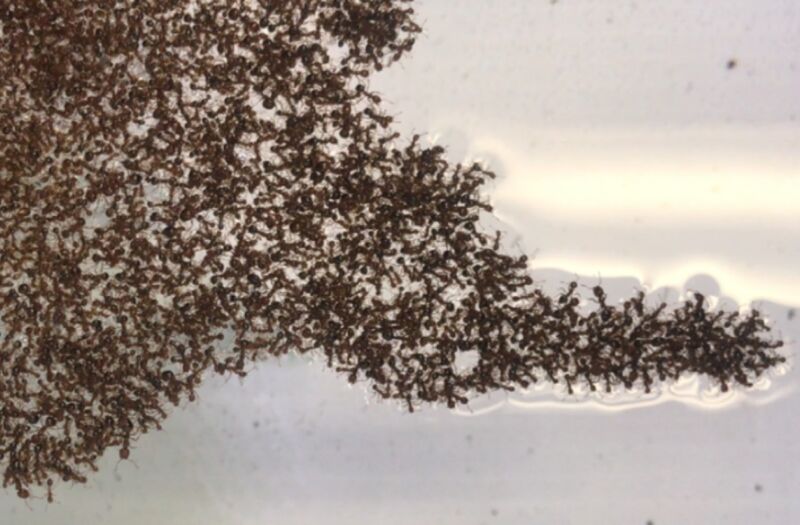A few simple rules determine how floating fire ant rafts change shape over time

Enlarge / Fire ants form a protrusion from an ant raft. (credit: Vernerey Research Group/CU Boulder)
Fire ants are a textbook example of collective behavior, capable of behaving as individuals and also banding together to form floating rafts in response to flooding. Now, a pair of mechanical engineers from the University of Colorado Boulder has identified some simple rules that seem to govern how floating rafts of fire ants contract and expand their shape over time, according to a new paper published in the journal PLOS Computational Biology. The hope is that, by gaining a better understanding of the simple rules underlying fire ant behavior, the engineers can develop better algorithms controlling how swarms of robots interact.
Fire ant rafts are not a matter of brain power or careful planning. "This behavior could, essentially, occur spontaneously," said co-author Robert Wagner. "There doesn't necessarily need to be any central decision-making by the ants."
Indeed, "single ants are not as smart as one may think, but, collectively, they become very intelligent and resilient communities," said co-author Franck Vernerey.
Read 13 remaining paragraphs | Comments